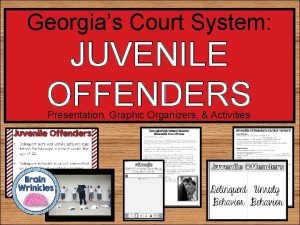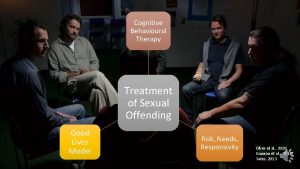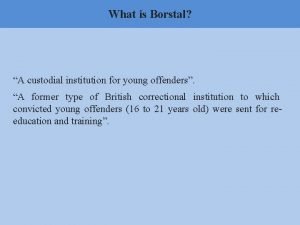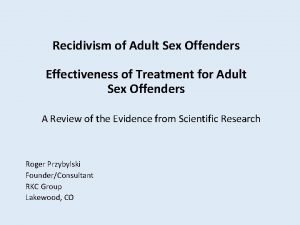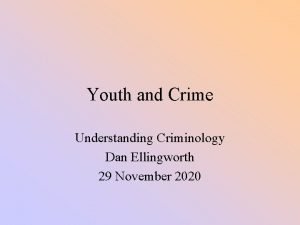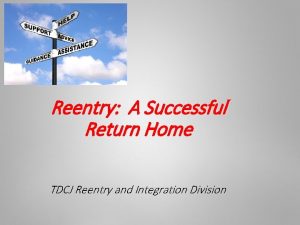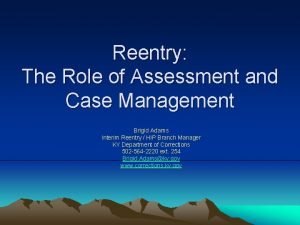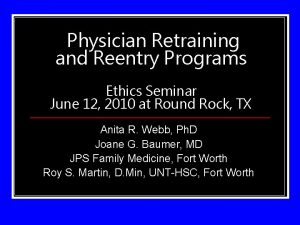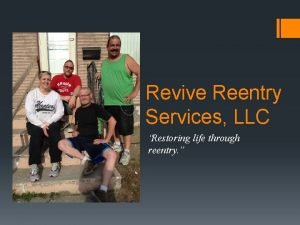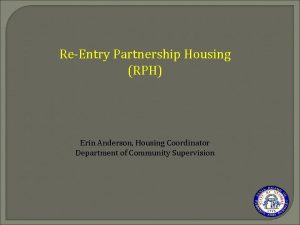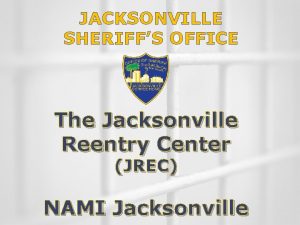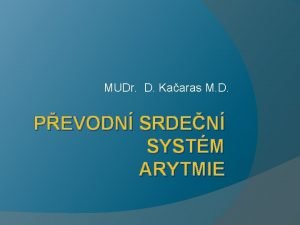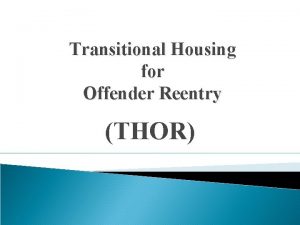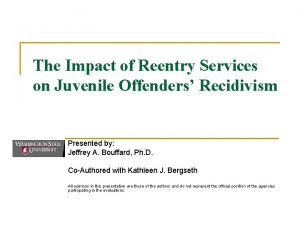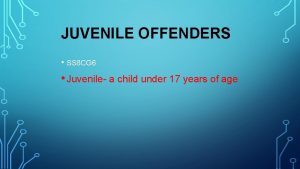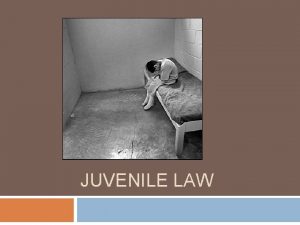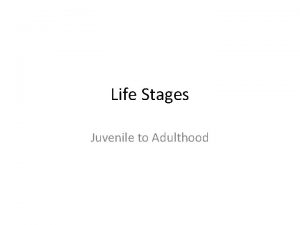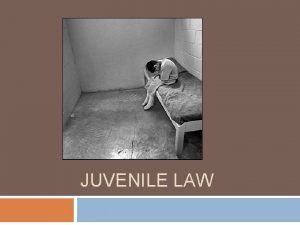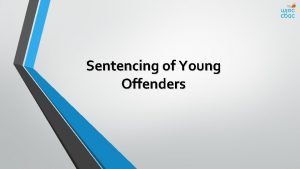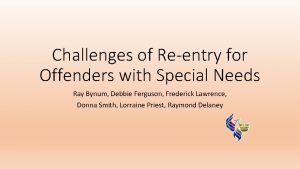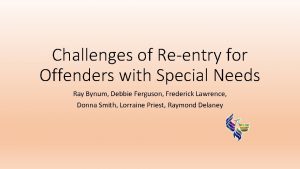Successful ReEntry A Look at Getting Juvenile Offenders


















- Slides: 18

Successful Re-Entry: A Look at Getting Juvenile Offenders Back into School and Keeping Them Engaged

Session Outcomes Overview of Project STAY OUT Identify youth barriers to re-entry Describe re-entry strategies for juvenile offenders Define Transition Specialist’s key activities Understand importance of community partners in re-entry Examples of practices in each area

DEANNE UNRUH & MIRIAM WAINTRUP UNIVERSITY OF OREGON NICK MOORE EUGENE 4 J SCHOOL DISTRICT JERMAINE WHITAKER MULTNOMAH ESD OREGON STATEWIDE TRANSITION CONFERENCE FEBRUARY 2017 PORTLAND, OREGON

Project STAY OUT: Strategies Teaching Adolescent Young Offenders to Use Transition Skills Funded by US Department of Education, Office of Special Education and Rehabilitative Services, Office of Special Education Programs Model Demonstration Project on Reentry of Students with disabilities from Juvenile Justice Facilities into Education, Employment, and community Programs 3 funded across nation: (1) Oregon, (2) Minnesota, and (3) Arizona

A 3 State Collaboration Arizona State University: Project RISE (Re-entry Intervention & Support for Engagement University of Minnesota, Institute on Community Integration: MAP Project Focuses on developing a model for effective reentry of youth with disabilities from a long-term secure care facility back into schools, employment, and community programs. Supports juvenile offenders transitioning from juvenile justice to secondary education, post secondary education, and employment opportunities in St. Paul and surrounding communities. University of Oregon: Project STAYOUT

Project STAY OUT Overview Goal 1: Build community capacity to serve young offenders w/ disabilities by providing training and PD to school personnel and JJ system Goal 2: Develop curriculum and training materials to support transition-related special educators in a young offender’s reentry into their home schools, employment, and Key Features • Transition Specialist, employed by school, trained in needs of JJ youth • Youth-driven planning • School engagement focus • Community-based Employment options • Targeted social skill training • IMMEDIATE access to age appropriate and culturally appropriate services

Target Population § § Must have an active IEP or be eligible for one Be 14 -21 years of age Already be in school or not yet enrolled but coming from detention, residential treatment, or close custody facility (they must have stayed longer than 10 days to be un-enrolled in school) Has been adjudicated

Primary Transition Specialist Activities Employment Services Career awareness activities Career exploration/job seeking activities Vocational Education participation Educational Services Support records transfer; IEP support/planning; Review and provide guidance for credit recovery Tutoring support (Specified coursework) Independent Living/Community Services Time/organizational management Citizenship/problem solving Peer relationships Transportation Social/Family Services Family intervention Access to mental health services

Strategies to Support Youth to Stay Engaged in School Additional areas of focus above providing evidence-based transition services: • • • Individual Education Family/Living Environments Employment Promoting Positive Peer Relationships Building Community Agency Capacity

Focus Area: Individual youth barriers include: self (poor decision making, lack of self advocacy skills); mental health needs; and moving from a structured to unstructured environment. Target Interventions Increase good decision making skills, locus of control, self-regulation skills Access to continued Cognitive Behavior Therapy and other mental health services in the community. Develop youth’s selfdetermination & advocacy skills.

Focus Area: Education related barriers included lack of basic academic skills and difficulty accessing school records and youth’s IEP. Target Interventions Strategies to increase engagement in education Facilitate records transfer and transition planning for IEP Match education programs to youth’s interests and academic needs. (Relevance) Provide flexible education opportunities. Focus on maintaining

Focus Area: Family/Living Environments Family & Independent Living related barriers include not being able to return to family, lack of consistent support; stable housing and lack of independent living skills. Target Interventions Improve familial emotional support Increase family & youth support Support Family/home stability services in the facility and community. Ensure services are culturally appropriate. Improve independent living skills Provide referrals to increase home stability: food pantries, referral for adult mental health or substance use treatment Target Independent Living skills in

Focus Area: Employment related barriers include lack of employment history or training, stigma of being involved in JJ, lack of transportation. Target Interventions Increase rate of employment Develop targeted employment services. Job matching based on youth strengths. Practice helping the youth talk about disclosing their JJ involvement on the job or interviews

Focus Area: Promoting Positive Peer Relationships Barriers related to peer relationships in the community include negative peers, gang issues, and access to drugs & alcohol. Target Interventions Increase pro-social networks Natural supports may develop through new friend sets in school, employment. Engage youth in healthy community activities related to interests, strengths, and hobbies.

Focus Area: Community Agency Capacity Building Community capacity building barriers include dealing with multiple schools, availability of mental health/drug treatment, and stigma of JJ youth by schools and community agencies. Target Interventions Increase multi-agency collaboration Educate all partners about the JJ system process and IDEA law Regular planning meetings relative to systems and youth. Develop records sharing and

Resources http: //www. neglecteddelinquent. org/sites/default/files/NDTAC_Issue_Brief_F APE_12_15. pdf National Technical Assistance Center for the Education of Neglected or delinquent Children and Youth http: //www. jlc. org/sites/default/files/ESSAJJ_Factsheet_ Final. Webinar. Version_Jan 262016. pdf Summary of Every Student Succeeds Act and Youth returning from JJ system http: //www. parentcenterhub. org/topics/juvenile-justice/ Center for Parent Information and Resources: webinar from September 20, 2016


Contact Information Jermaine Whitaker, jwhitake@mesd. k 12. or. us Nick Moore, moore_ni@4 j. lane. edu Miriam Waintrup, miriamw@uoregon. edu Deanne Unruh, dkunruh@uoregon. edu
 Juvenile delinquency graphic organizer
Juvenile delinquency graphic organizer Look up look down
Look up look down The secret to getting ahead is getting started
The secret to getting ahead is getting started Cognitive behavioral therapy for sex offenders
Cognitive behavioral therapy for sex offenders Borstal institution meaning
Borstal institution meaning According to choice theorists, offenders
According to choice theorists, offenders Cognitive behavioral therapy for sex offenders
Cognitive behavioral therapy for sex offenders Youthful offenders act 1854
Youthful offenders act 1854 Juvenile delinquents act
Juvenile delinquents act Tcoommi
Tcoommi +reentry +case +management
+reentry +case +management Physician reentry programs
Physician reentry programs Revive reentry
Revive reentry Reentry partnership housing
Reentry partnership housing Jacksonville reentry center
Jacksonville reentry center Reentry fenomen
Reentry fenomen 6 month thor approved rehab
6 month thor approved rehab Look at activity 1 and answer
Look at activity 1 and answer Look at the picture in activity 1
Look at the picture in activity 1
